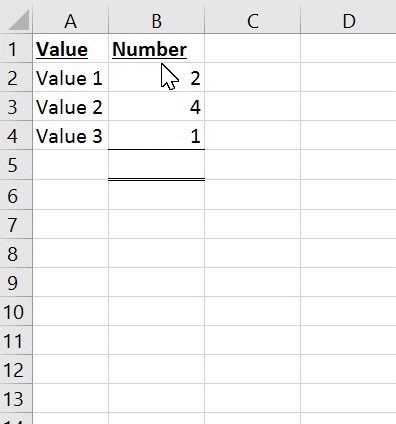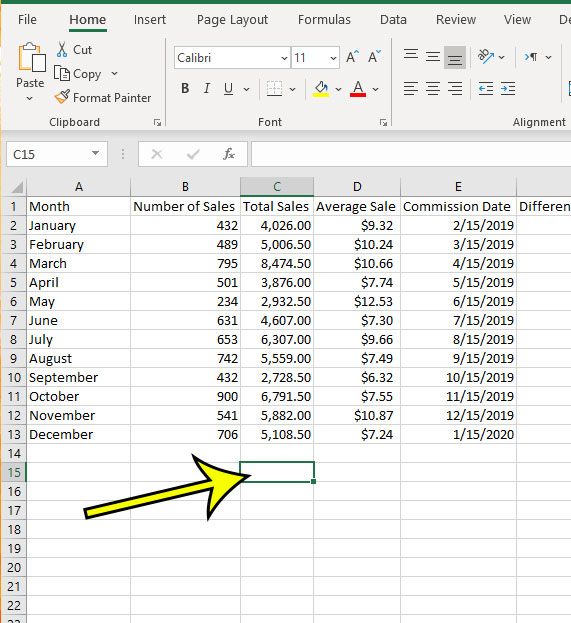
Click OK, and evaluate your Excel cumulative chart:.In Excel 2010 and earlier, simply select the desired line type for the Cumulative Sum series, which you've selected on the previous step:
How to sum a column in excel online series#
Or, you can highlight the Custom Combination icon, and choose the line type you want for the Cumulative Sum data series ( Line with Markers in this example): If you are using a recent version of Excel 2013 or Excel 2016, select the Combo chart type, and click on the first icon (Clustered Column - Line) at the top of Change Chart Type dialog:.In the newly created chart, click the Cumulative Sum data series (orange bars in this example), and right click to select Change Series Chart Type.


When you copy the formula down a column, you will notice that the cumulative totals in the rows below the last cell with a value in column C all show the same number:

Strictly speaking, the above screenshot shows not exactly a cumulative sum, which implies summation, but some sort of "running total and running difference" Anyway, who cares about the right word if you've got the desired result, right? :)Īt first sight, our Excel Cumulative Sum formula looks perfect, but it does have one significant drawback. And then, to show the running total, enter the following formula in column D: For this, enter deposits as positive numbers, and withdrawals as negative numbers in some column (column C in this example). In a similar manner, you can use the Excel SUM function to find the cumulative sum for your bank balance. In cell B4, the formula turns into SUM($B$2:B$), and totals numbers in cells B2 to B4, and so on: So, when our Sum formula is copied to B3, it becomes SUM($B$2:B3), and returns the total of values in cells B2 to B3. For more information about Excel cell references, please see Why use dollar sign ($) in Excel formulas. The second reference without the $ sign (B2) is relative and it adjusts based on the relative position of the cell where the formula is copied. Because an absolute reference never changes no matter where the formula moves, it will always refer back to B2. In your running total formula, the first reference should always be an absolute reference with the $ sign ($B$2).

To calculate a running total in Excel, you can use the SUM function combined with a clever use of absolute and relative cells references.įor example, to calculate the cumulative sum for numbers in column B beginning in cell B2, enter the following formula in C2 and then copy it down to other cells:
How to sum a column in excel online how to#
How to calculate running total (cumulative sum) in Excel


 0 kommentar(er)
0 kommentar(er)
